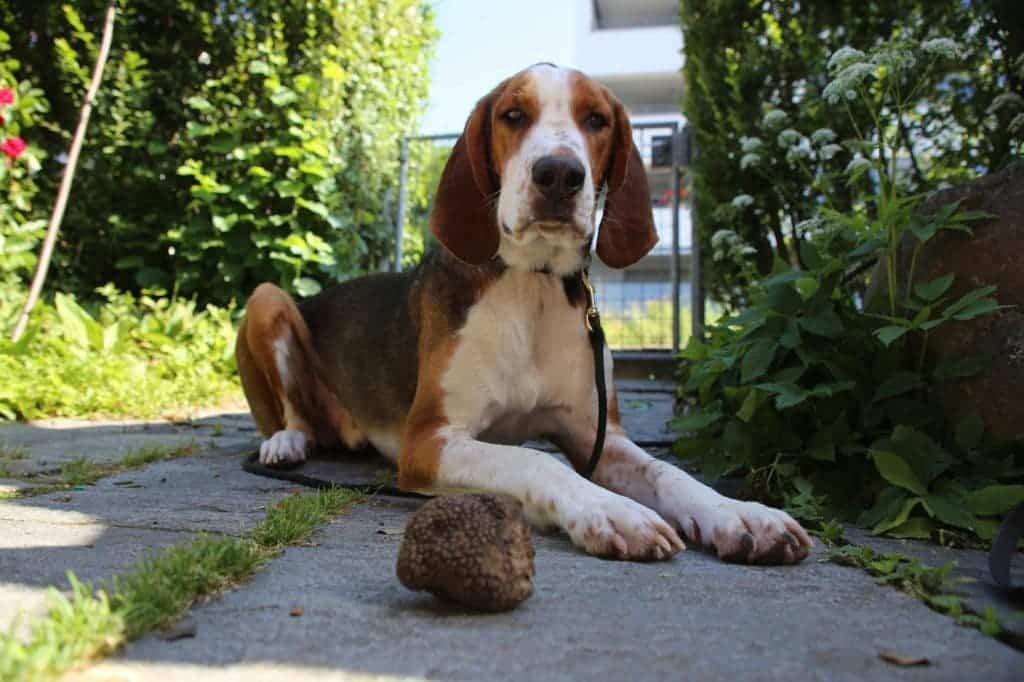Plants and mushrooms growing sometimes accumulate dangerous levels of radioactivity. But until now, this hasn’t been confirmed for truffles, and researchers wanted to see whether truffles too accumulate radioactive material – the results were quite surprising.

Miro is a trained truffle dog that belongs to Simon Egli, a co-author of the Biogeosciences paper based at Swiss Federal Research Institute WSL. He’s pictured here with a Burgundy truffle he found in Switzerland.
CREDIT
Simon Egli, WSL
The Chernobyl accident was a catastrophic nuclear accident that occurred on 26 April 1986 at the Chernobyl Nuclear Power Plant in the town of Pripyat, in Ukraine (then practically under the USSR). It is one of only two classified as a level 7 event (the maximum classification) on the International Nuclear Event Scale. The disaster released dramatic quantities of radioactive particles, especially caesium-137 (137Cs). Transported by winds and deposited by heavy rainfall, the caesium spread throughout much of Eastern Europe.
“Much of the continent’s topsoil layers are still radioactively contaminated,” says Ulf Büntgen, Head of the Dendroecology Group at the Swiss Federal Research Institute (WSL) and lead author of the study.
However, subterranean Burgundy or summer truffles (Tuber aestivum), don’t seem to mind it that much. The truffles, classified as a delicacy, exhibited very low levels of caesium.
“We were very positively surprised that all specimens we analysed exhibited insignificant values of 137Cs,” says Büntgen.
This comes as very surprising. Like other mushrooms, truffles take their nutrients from the topsoil, where radioactive material also tends to gather. This has been confirmed for a number of other mushrooms and plants, as well as in the animals that consume them. They set out and analysed 82 Burgundy truffles collected across Europe between 2010 and 2014. The samples were harvested by trained truffle dogs, and all of them, without exception, did not exhibit dangerous levels of radioactivity.
“Sampling sites were defined by the success of various truffle dogs. We were trying to get as many fruit bodies as possible from as wide an area as possible,” explains Büntgen. “The resulting pattern is by far not optimal but indeed good enough for a first assessment and interpretation.”
Why this happens is still an open question. There doesn’t seem to be anything biologically different about the truffles, but obviously there is. In the end, this could actually help us learn more about fungus. It probably has something to do with the way they absorb nutrients from the soil, but that remains to be seen.









